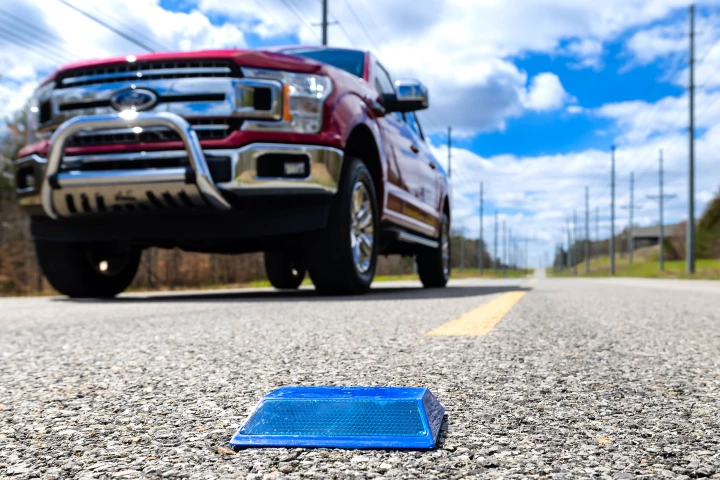Oak Ridge National Laboratory
-
BC8 superdiamonds are harder than any known material, but they likely only exist in the cores of giant exoplanets. Now, the Frontier supercomputer has unraveled the secret of their formation, a finding that could lead to their production on Earth.
-
Nobody wants to live in a drafty house, yet checking for substantial air leaks within a home can be a complex process. Scientists have now devised what could be a much easier method of doing so, utilizing a technique that dates back to 1864.
-
When a road is covered in snow or obscured by fog, the navigation systems of self-driving cars may have trouble seeing where that road is. Specially equipped pavement markers could help, by continuously transmitting radio signals to passing vehicles.
-
Scientists have demonstrated a technique to allow quantum computers to store more information in photons of light. The team encoded eight levels of data into photons and read it back easily, representing an exponential leap over previous systems.
-
Scientists have developed an efficient new way to convert methane into methanol at room temperature. The technique could help reduce greenhouse gas emissions and provide a cleaner way to make key products.
-
By carefully tinkering with the chemical structure of a common household plastic, scientists have managed to upcycle it into a reusable adhesive with unique properties, billing it as one of the toughest materials known to science.
-
Two promising avenues in the development of next-energy storage involve the use of lithium metal and an electrolyte that is solid rather than liquid, and new research brings these branches of battery research together in an exciting new breakthrough.
-
Scientists at Oak Ridge National Laboratory have developed a new robotic system that automatically disassembles spent electric vehicle batteries with great efficiency and safety, making them easier to recycle.
-
In an effort to assist the shift away from the rare and expensive metal cobalt, scientists at Oak Ridge National Laboratory have developed an alternative nickel-based battery architecture, which they say ticks a few important boxes.
-
The US Department of Energy (DOE) has announced and detailed a blueprint for a national quantum internet that would be super-fast and nigh on unhackable. The document describes four priority research areas, and five major milestones on the path.
-
Carbon dioxide is an all too common waste product of industry, belched into the air from smokestacks. Now, researchers have developed a new type of fluorinated membrane that can selectively filter CO2 out of flue gas at the point of release.
-
The world’s most powerful supercomputer has just fired up. A newcomer named Fugaku has nabbed the number one spot in the Top500 list of supercomputers, surpassing Summit, the reigning champion of the past few years.
Load More











